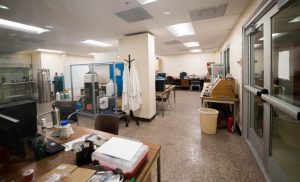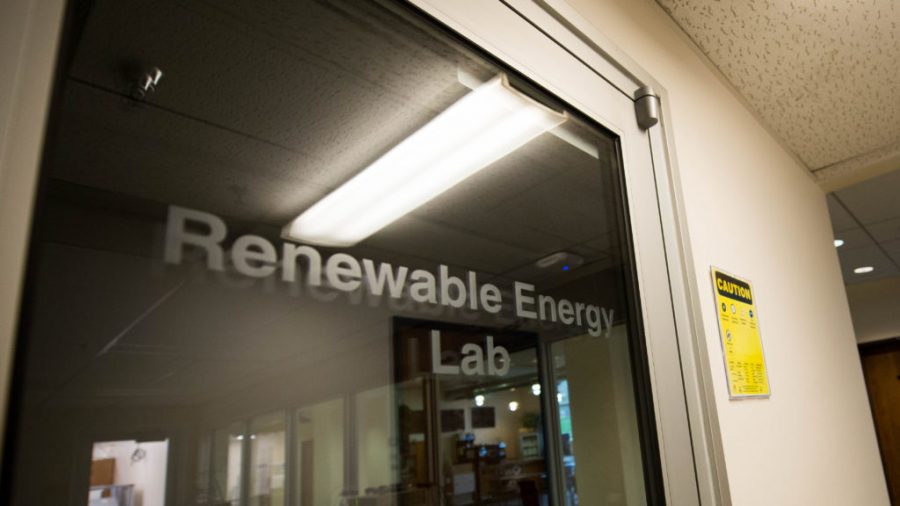Utah Senators Orrin Hatch and Mike Lee are among the nearly half of United States senators who have denied that the earth’s climate is changing as a result of human activity — a phenomenon that 97 percent of climate scientists agree threatens the planet.
Since President Donald Trump’s inauguration, he has appointed individuals to his cabinet with views similar to those of Utah’s GOP senators. While Secretary of the Interior Ryan Zinke, Secretary of Energy Rick Perry and EPA Director Scott Pruitt have admitted that humans influence climate change, none of them seem to think that they are the primary driver. In fact, Perry and Pruitt have a past of denying global warming altogether.
In response to these “attacks” on science, scientists have organized a March for Science in Washington D.C. on Earth Day, with more than 425 satellite marches around the world. One of the scientists heading Salt Lake City’s March for Science is Nalini Nadkarni, a professor of biology at the University of Utah.
According to the movement’s website, the march is a “time for people who support science to take a public stand and be counted.” For Nadkarni, though, the purpose of the march extends beyond politics into everyday lives.
“Whether we’re aware of it or not, science has really allowed us the lifestyles and the values that we cherish,” she said.
Nadkarni emphasized that the march isn’t about bipartisan politics, but is meant to celebrate and defend scientific research. She believes that it is important that lawmakers and policymakers consider the facts before they act.
“It’s important that policies take into account the scientific way of knowing, of asking questions, of testing hypotheses, of gathering data and then interpreting that data in an objective way,” Nadkarni said. “When we get that kind of information that’s evidence-based, whether that data is sea level rise or the number of molecules of carbon dioxide in the atmosphere, then I think that is informing policymakers of the right decisions to make.”
Trump’s recently proposed budget includes deep cuts into agencies that fund scientific research. Among them are the Department of Agriculture, the National Oceanic and Atmospheric Administration (NOAA), the Department of Energy, the National Institutes of Health (NIH), the Department of the Interior, the Environmental Protection Agency (EPA) and the National Aeronautics and Space Administration (NASA). Remarkably, however, the plan doesn’t mention the National Science Foundation (NSF).
At the U, there are numerous ongoing research projects funded by every one of these institutions. Nadkarni’s research in Central and South American rainforests is one of the many projects receiving public funding. She said that although her research may seem frivolous to others, her findings contribute to education and drug development.
“There really are a lot of much broader implications,” Nadkarni said.
According to Kevin Perry, the chair of the Department of Atmospheric Sciences at the U, more than 50 percent of their external grants come from the EPA, NASA and NOAA — all of which would have their budget cut under Trump’s proposed budget. Perry said this has led concerned faculty to be more cautious in their spending.
“The most immediate impact was a reluctance of the professors to bring on new graduate students this year because of future funding uncertainties,” said Perry. “Although no projects have been directly affected yet, I know that several faculty members decided not to make graduate offers because of the uncertainties.”
One of the department’s ongoing projects is the Utah Atmospheric Trace Gas and Air Quality (UATAQ) lab. The lab is funded by the Department of Energy and NOAA. Ben Fasoli, the student directory of UATAQ, said that if congress approves Trump’s budget, he’s unsure if the lab will be able to continue to operate.
“Our largest efforts focus on improving our understanding of urban emissions and the drivers behind harmful air quality,” said Fasoli. “However, the private sector has little to no incentive to fund research studying pollution exposure and atmospheric trace gases in this way. As such, we rely heavily on government funding.”
 UATAQ boasts one of the longest continuous urban carbon dioxide records in the country, but without financial backing, that streak may come to an end.
UATAQ boasts one of the longest continuous urban carbon dioxide records in the country, but without financial backing, that streak may come to an end.
“These budget cuts would jeopardize our ability to maintain crucial measurement networks that have existed for over a decade and make it more difficult for us to pursue future measurements and analyses,” Fasoli said.
Headquartered at the U, UATAQ’s data collection sites around the mountain-encased Salt Lake Valley provide conditions that allow the lab to contribute unique insights to the study of pollution problems faced in urban areas. According to Fasoli, the loss of the lab would be a critical hit to air quality research.
“Without these data, we would have far less understanding about the chemical reactions that cause the unhealthy air in our wintertime ‘inversions,’ pollution exposure in different areas throughout the Salt Lake Valley, and how urban development is changing the scales and patterns of our emissions,” Fasoli said.
While doctors say inversion contributes to premature death, medical research at the U would also take a hit. The U’s medical school, ranked 40th for research in the country, would also take a hit. In 2013, of the $235.3 million in research grants awarded to University of Utah Health, $109.7 million was from NIH.
One of the aims of the March for Science is to draw attention to these cuts. Nadkarni acknowledged that officials in the federal government are concerned about the country’s debt, but she worries about a future with decreased research.
“If we don’t provide the resources to support a scientifically sound society, I think we’re going to be in deeper trouble than if we did,” said Nadkarni. “What’s most important is to have data-based information in order to make sound policies for the whole population of the world.”
e.anderson@dailyutahchronicle.com
@emilyinorgandy


